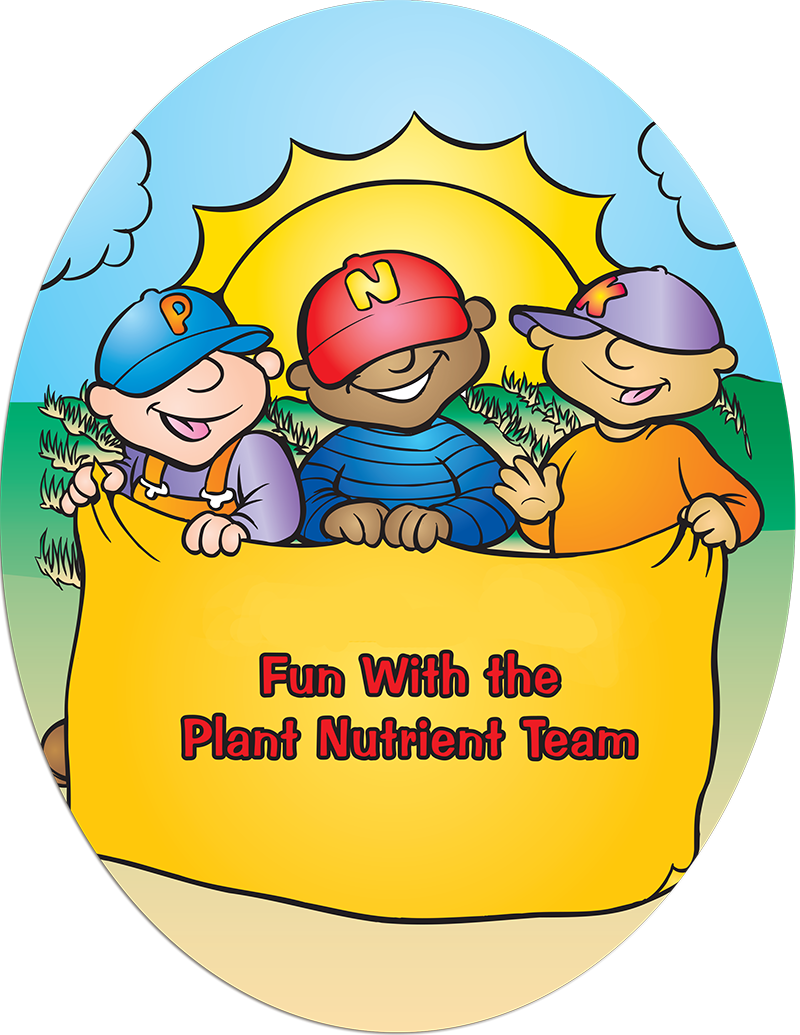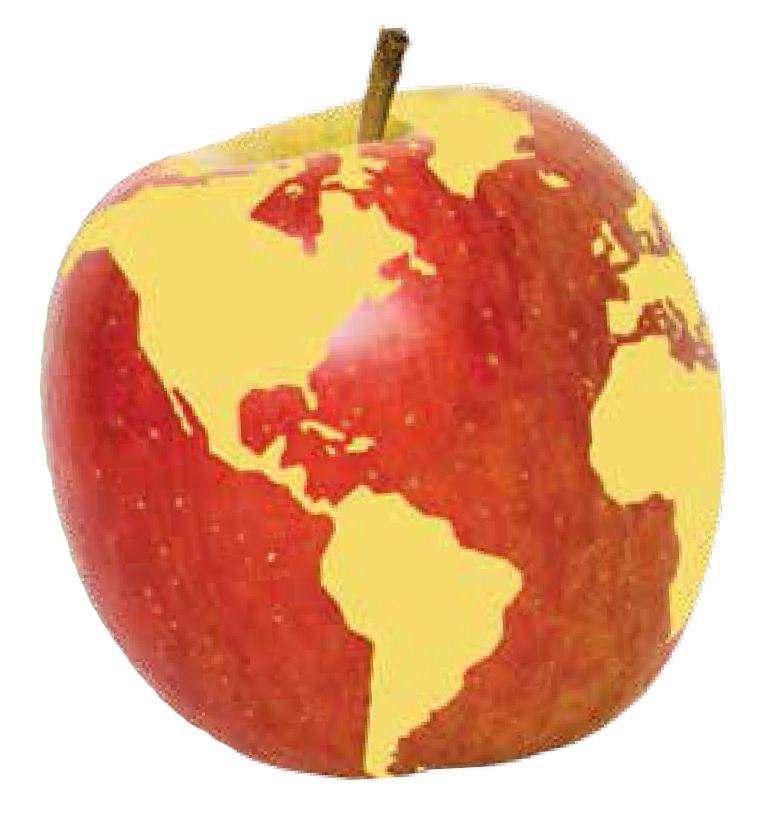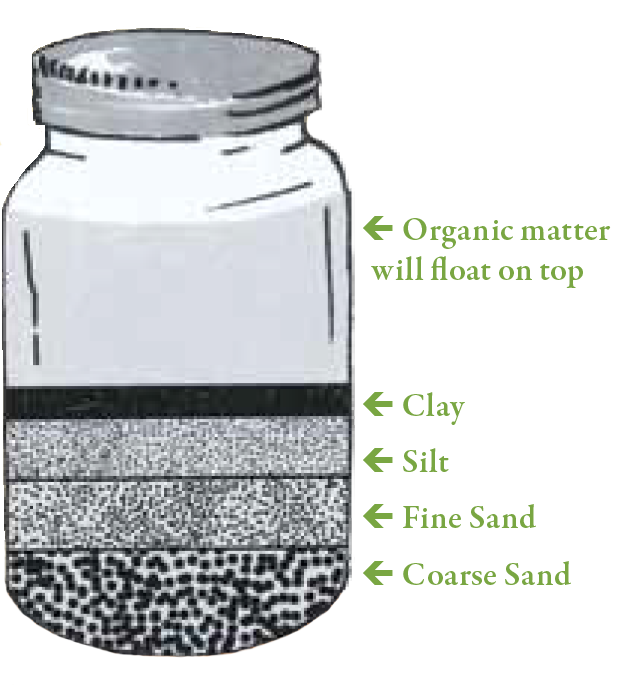Background
Lesson Activities
Recommended Companion Resources
Credits
Author
Shaney Emerson and Mary Pat Jones | California Foundation for Agriculture in the Classroom
Acknowledgements
The Educator’s Guide was funded by California Department of Food and Agriculture’s Fertilizer, Research, and Education Program (FREP) and developed by California Foundation for Agriculture in the Classroom.
Executive Director: Judy Culbertson
Illustrator: Erik Davison
Layout and Design: Nina Danner and Renee Thompson
Copy Editor: Leah Rosasco
Special Thanks to: Nutrients for Life Foundation, International Plant Nutrition Institute, Fertilizer Research and Education Program, and California Department of Food and Agriculture.
Standards
Texas Content Area Standards
-
ELA: K.110.2.b.1
Developing and sustaining foundational language skills: listening, speaking, discussion, and thinking - - oral language. The student develops oral language through listening, speaking, and discussion.
- ELA: K.110.2.b.1.C: share information and ideas by speaking audibly and clearly using the conventions of language
- ELA: K.110.2.b.1.D: work collaboratively with others by following agreed-upon rules for discussion, including taking turns;
-
ELA: 1.110.3.b.1
Developing and sustaining foundational language skills: listening, speaking, discussion, and thinking - - oral language. The student develops oral language through listening, speaking, and discussion.
- ELA: 1.110.3.b.1.C: share information and ideas about the topic under discussion, speaking clearly at an appropriate pace and using the conventions of language
- ELA: 1.110.3.b.1.D: work collaboratively with others by following agreed-upon rules for discussion, including listening to others, speaking when recognized, and making appropriate contributions
-
ELA: 2.110.4.b.1
Developing and sustaining foundational language skills: listening, speaking, discussion, and thinking -- oral language. The student develops oral language through listening, speaking, and discussion.
- ELA: 2.110.4.b.1.C: share information and ideas that focus on the topic under discussion, speaking clearly at an appropriate pace and using the conventions of language
- ELA: 2.110.4.b.1.D: work collaboratively with others by following agreed-upon rules for discussion, including listening to others, speaking when recognized, making appropriate contributions, and building on the ideas of others
-
Social Studies: 2.113.13.c.16
Social studies skills. The student communicates in written, oral, and visual forms. The student is expected to:
- Social Studies: 2.113.13.c.16.E: communicate information visually, orally, or in writing based on knowledge and experiences in social studies
- Social Studies: 2.113.13.c.16.F: create written and visual material such as stories, maps, and graphic organizers to express ideas
-
Social Studies: K.113.11.c.14
Social studies skills. The student communicates in oral and visual forms. The student is expected to:
- Social Studies: K.113.11.c.14.C: communicate information visually, orally, or in writing based on knowledge and experiences in social studies
- Social Studies: K.113.11.c.14.D: create and interpret visuals, including pictures and maps
-
Social Studies: 1.113.12.c.17
Social studies skills. The student communicates in oral, visual, and written forms. The student is expected to:
- Social Studies: 1.113.12.c.17.C: communicate information visually, orally, or in writing based on knowledge and experiences in social studies
- Social Studies: 1.113.12.c.17.D: create and interpret visual and written material
-
Science: 2.112.4.b.1
Scientific and engineering practices. The student asks questions, identifies problems, and plans and safely conducts classroom, laboratory, and field investigations to answer questions, explain phenomena, or design solutions using appropriate tools and models. The student is expected to:
- Science: 2.112.4.b.1.A: ask questions and define problems based on observations or information from text, phenomena, models, or investigations
- Science: 2.112.4.b.1.B: use scientific practices to plan and conduct simple descriptive investigations and use engineering practices to design solutions to problems
- Science: 2.112.4.b.1.E: collect observations and measurements as evidence
- Science: 2.112.4.b.1.F: record and organize data using pictures, numbers, words, symbols, and simple graphs
- Science: 2.112.4.b.1.G: develop and use models to represent phenomena, objects, and processes or design a prototype for a solution to a problem
-
Science: K.112.2.b.1
Scientific and engineering practices. The student asks questions, identifies problems, and plans and safely conducts classroom, laboratory, and field investigations to answer questions, explain phenomena, or design solutions using appropriate tools and models. The student is expected to:
- Science: K.112.2.b.1.A: ask questions and define problems based on observations or information from text, phenomena, models, or investigations.
- Science: K.112.2.b.1.B: use scientific practices to plan and conduct simple descriptive investigations and use engineering practices to design solutions to problems.
- Science: K.112.2.b.1.E: collect observations and measurements as evidence.
- Science: K.112.2.b.1.F: record and organize data using pictures, numbers, words, symbols, and simple graphs.
- Science: K.112.2.b.1.G: develop and use models to represent phenomena, objects, and processes or design a prototype for a solution to a problem.
-
Science: K.112.2.b.2
Scientific and engineering practices. The student analyzes and interprets data to derive meaning, identify features and patterns, and discover relationships or correlations to develop evidence-based arguments or evaluate designs. The student is expected to:
- Science: K.112.2.b.2.A: identify basic advantages and limitations of models such as their size, properties, and materials.
- Science: K.112.2.b.2.B: analyze data by identifying significant features and patterns.
- Science: K.112.2.b.2.C: use mathematical concepts to compare two objects with common attributes.
- Science: K.112.2.b.2.D: evaluate a design or object using criteria to determine if it works as intended.
-
Science: K.112.2.b.5
Recurring themes and concepts. The student uses recurring themes and concepts to make connections across disciplines. The student is expected to:
- Science: K.112.2.b.5.A: identify and use patterns to describe phenomena or design solutions.
- Science: K.112.2.b.5.G: describe how factors or conditions can cause objects, organisms, and systems to either change or stay the same.
-
Science: K.112.2.b.10
Earth and space. The student knows that the natural world includes earth materials and systems that can be observed. The student is expected to:
- Science: K.112.2.b.10.A: describe and classify rocks by the observable properties of size, shape, color, and texture.
-
Science: K.112.2.b.11
Earth and space. The student knows that earth materials are important to everyday life. The student is expected to observe and generate examples of practical uses for rocks, soil, and water.
- Science: K.112.2.b.11: Earth and space. The student knows that earth materials are important to everyday life. The student is expected to observe and generate examples of practical uses for rocks, soil, and water.
-
Science: K.112.2.b.12
Organisms and environments. The student knows that plants and animals depend on the environment to meet their basic needs for survival. The student is expected to:
- Science: K.112.2.b.12.A: observe and identify the dependence of plants on air, sunlight, water, nutrients in the soil, and space to grow.
-
Science: K.112.2.b.13
Organisms and environments. The student knows that organisms resemble their parents and have structures and undergo processes that help them interact and survive within their environments. The student is expected to:
- Science: K.112.2.b.13.A: identify the structures of plants, including roots, stems, leaves, flowers, and fruits.
- Science: K.112.2.b.13.C: identify and record the changes from seed, seedling, plant, flower, and fruit in a simple plant life cycle.
-
Science: 1.112.3.b.1
Scientific and engineering practices. The student asks questions, identifies problems, and plans and safely conducts classroom, laboratory, and field investigations to answer questions, explain phenomena, or design solutions using appropriate tools and models. The student is expected to:
- Science: 1.112.3.b.1.A: ask questions and define problems based on observations or information from text, phenomena, models, or investigations.
- Science: 1.112.3.b.1.B: use scientific practices to plan and conduct simple descriptive investigations and use engineering practices to design solutions to problems.
- Science: 1.112.3.b.1.E: collect observations and measurements as evidence.
- Science: 1.112.3.b.1.F: record and organize data using pictures, numbers, words, symbols, and simple graphs.
- Science: 1.112.3.b.1.G: develop and use models to represent phenomena, objects, and processes or design a prototype for a solution to a problem.
-
Science: 1.112.3.b.2
Scientific and engineering practices. The student analyzes and interprets data to derive meaning, identify features and patterns, and discover relationships or correlations to develop evidence-based arguments or evaluate designs. The student is expected to:
- Science: 1.112.3.b.2.A: identify basic advantages and limitations of models such as their size, properties, and materials.
- Science: 1.112.3.b.2.B: analyze data by identifying significant features and patterns.
- Science: 1.112.3.b.2.C: use mathematical concepts to compare two objects with common attributes.
-
Science: 1.112.3.b.5
Recurring themes and concepts. The student uses recurring themes and concepts to make connections across disciplines. The student is expected to:
- Science: 1.112.3.b.5.A: identify and use patterns to describe phenomena or design solutions.
- Science: 1.112.3.b.5.G: describe how factors or conditions can cause objects, organisms, and systems to either change or stay the same.
-
Science: 1.112.3.b.10
Earth and space. The student knows that the natural world includes earth materials that can be observed in systems and processes. The student is expected to:
- Science: 1.112.3.b.10.A: investigate and document the properties of particle size, shape, texture, and color and the components of different types of soils such as topsoil, clay, and sand.
-
Science: 1.112.3.b.11
Earth and space. The student knows that earth materials and products made from these materials are important to everyday life. The student is expected to:
- Science: 1.112.3.b.11.A: identify and describe how plants, animals, and humans use rocks, soil, and water.
-
Science: 1.112.3.b.12
Organisms and environments. The student knows that the environment is composed of relationships between living organisms and nonliving components. The student is expected to:
- Science: 1.112.3.b.12.A: classify living and nonliving things based upon whether they have basic needs and produce young.
- Science: 1.112.3.b.12.B: describe and record examples of interactions and dependence between living and nonliving components in terrariums or aquariums.
- Science: 1.112.3.b.12.C: identify and illustrate how living organisms depend on each other through food chains.
-
Science: 2.112.4.b.2
Scientific and engineering practices. The student analyzes and interprets data to derive meaning, identify features and patterns, and discover relationships or correlations to develop evidence-based arguments or evaluate designs. The student is expected to:
- Science: 2.112.4.b.2.A: identify basic advantages and limitations of models such as their size, properties, and materials
- Science: 2.112.4.b.2.B: analyze data by identifying significant features and patterns
- Science: 2.112.4.b.2.C: use mathematical concepts to compare two objects with common attributes
-
Science: 2.112.4.b.5
Recurring themes and concepts. The student uses recurring themes and concepts to make connections across disciplines. The student is expected to:
- Science: 2.112.4.b.5.A: identify and use patterns to describe phenomena or design solutions
- Science: 2.112.4.b.5.G: describe how factors or conditions can cause objects, organisms, and systems to either change or stay the same
-
Science: 2.112.4.b.10
Earth and space. The student knows that the natural world includes earth materials that can be observed in systems and processes. The student is expected to:
- Science: 2.112.4.b.10.A: investigate and describe how wind and water move soil and rock particles across the Earth's surface such as wind blowing sand into dunes on a beach or a river carrying rocks as it flows
-
Science: 2.112.4.b.12
Organisms and environments. The student knows that living organisms have basic needs that must be met through interactions within their environment. The student is expected to:
- Science: 2.112.4.b.12.A: describe how the physical characteristics of environments, including the amount of rainfall, support plants and animals within an ecosystem
-
Math: 2.111.4.b.3
Number and operations. The student applies mathematical process standards to recognize and represent fractional units and communicates how they are used to name parts of a whole. The student is expected to:
- Math: 2.111.4.b.3.A: partition objects into equal parts and name the parts, including halves, fourths, and eighths, using words
 The Earth’s soil is a very important resource. Without healthy soil we would not be able to grow the plants we need for food, fiber, and shelter. There are many different types of soil and each is made up of different components, not just dirt! Soil is composed of three different types of particles that are classified as sand, silt, or clay.
The Earth’s soil is a very important resource. Without healthy soil we would not be able to grow the plants we need for food, fiber, and shelter. There are many different types of soil and each is made up of different components, not just dirt! Soil is composed of three different types of particles that are classified as sand, silt, or clay. Hold up an apple to the class and tell the students that it represents Earth.
Hold up an apple to the class and tell the students that it represents Earth. remaining space with water. Have the students take turns vigorously shaking the jar until the larger clumps are broken apart. Let the jar sit for two minutes. Use a permanent marker to draw a line to mark each layer. Allow at least 24 hours for the soil to settle completely. The top layer will be clay, which includes the smallest, lightest particles. The middle layer will be silt, and the heaviest particles fall to the bottom, sand. Have the students identify the thickest layer to determine the soil type.
remaining space with water. Have the students take turns vigorously shaking the jar until the larger clumps are broken apart. Let the jar sit for two minutes. Use a permanent marker to draw a line to mark each layer. Allow at least 24 hours for the soil to settle completely. The top layer will be clay, which includes the smallest, lightest particles. The middle layer will be silt, and the heaviest particles fall to the bottom, sand. Have the students identify the thickest layer to determine the soil type.